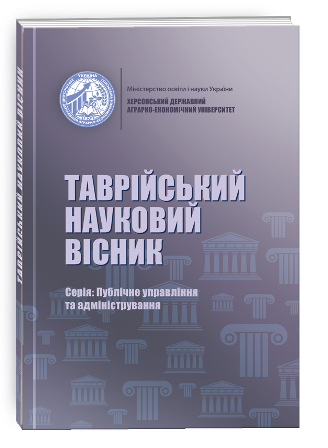THE HOLODOMOR OF 1932–1933 IN UKRAINE AND ITS QUALIFICATION AS GENOCIDE UNDER THE CONVENTION ON THE PREVENTION AND PUNISHMENT OF THE CRIME OF GENOCIDE (1948)
DOI:
https://doi.org/10.32782/tnv-pub.2025.1.8Keywords:
Holodomor, genocide, Holodomor-genocide, law, civil society, legal responsibility, elements of a crime, rehabilitation, historical and legal research, legal actsAbstract
The article explores the Holodomor of 1932–1932 and its qualification as a crime of genocide under the Convention on the Prevention and Punishment of the Crime of Genocide (December 9, 1948). Currently, there is a lack of research on the legal assessment of the Holodomor that could support its recognition at the international level. Additionally, the legal mechanisms for rehabilitation and compensation for the moral and material damages suffered by the victims of the genocide and their descendants remain insufficiently developed. In fact, Ukraine finds itself in a situation where it alone bears responsibility for criminal actions against its citizens during the specified periods. At the same time, the russian federation, which is the successor to the USSR, is trying to rehabilitate J. Stalin, the main perpetrator of the genocide. This state of affairs raises the question of the legal responsibility of the russian federation for the genocide of Ukrainians. An interesting aspect is the very emergence of the term "genocide" in international law and the legal field as a whole. The first to formulate the concept of "genocide" in jurisprudence was the American scientist of Polish origin, lawyer, Raphael Lemkin (1900–1959). He first addressed this concept from a legal standpoint in the 1930s, examining the Armenian genocide committed by Turkey in 1914. Investigating this crime in order to prevent similar things from happening in the future, the scientist is thinking about how to prevent similar crimes using legal norms. To introduce the concept of such a serious large-scale crime into international law, he tries to describe its characteristic features. In his works, he identifies six types of genocide technologies: political; social; cultural; economic; biological; physical. The authors sought to analyze the qualification of the Holodomor as a crime of genocide under the Convention on the Prevention and Punishment of the Crime of Genocide (of December 9, 1948).
References
Рафаель Лемкін. Радянський геноцид в Україні (стаття 28 мовами). / Ред. Р.Сербин. К.: Майстерня книги, 2009. 208 с.
Василенко В. Голодомор 1932–1933 років в Україні як злочин геноциду: правова оцінка. К.: Видавництво імені Олени Теліги, 2009. 48 с.
Ромовська З.В. Сімейне законодавство України: Гендерна експертиза / Відп. ред. Т.М. Мельник. К.: Логос, 2001. 40 с.
Навчальний посібник для вчителів «Голодомор 1932–1933 років – геноцид української нації». Київ, 2021. 336 с.
Кульчицький Станіслав. Український Голодомор в контексті політики Кремля початку 1930-х рр. К., НАН України, Інститут історії України, 2014. 208 с.
Політичний терор і тероризм в Україні ХІХ–ХХ ст. Історичні нариси. Під ред. В. Смолія. К., 2002. 952 с.
Кримінальний кодекс України URL: https://zakon.rada.gov.ua/laws/show/2341-14/ed20190101#Text
Statute of the International Tribunal for Rwanda URL: https://legal.un.org/avl/pdf/ha/ictr_ef.pdf
Закон України від 28.11.2006 «Про Голодомор 1932-1933 років в Україні» URL: № 376-V https://zakon.rada.gov.ua/laws/show/376-16#Text
Конвенція про запобігання злочинові геноциду та покарання за нього від 9 грудня 1948 р., ратифікована Українською РСР 22 липня 1954 р. URL: https://zakon.rada.gov.ua/laws/show/995_155#Text.
Rome Statute of the International Criminal Court URL: https://www.icc-cpi.int/sites/default/files/2024-05/Rome-Statute-eng.pdf







